This article was written in 1998. Why not try our more recent article on Murals in Belfast?
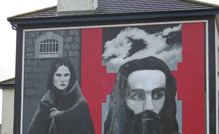
Sandy Row, South Belfast
The tradition of murals in Belfast began in the Protestant Loyalist community at the turn of the century.
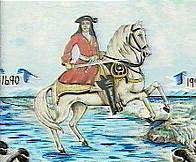
The first was of William of Orange ("King Billy"), painted in 1908, celebrating his defeat of the Catholic King James II at the Battle of the Boyne in 1690. This image has been repeated many times since then, but has become less popular in recent years although most Loyalist murals still tend to be painted around the annual 12th July commemoration of the event.
Other important Loyalist images include:
The Battle of the Somme in 1916, where the 36th Ulster Division suffered heavy casualties fighting for Britain in the first World War.
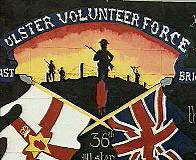
Symbolic devices, such as the Union Jack, the Ulster Flag and the Red Hand of Ulster, originally a heraldic symbol which can be seen on both Loyalist and Republican paintings.
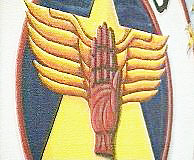
More militaristic images have become increasingly popular in recent years.
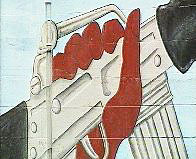
New Lodge Road, North Belfast
Catholic Republican murals began around 1981, prompted by the hunger strike by several Republican prisoners. Since then Republican murals have tended to use more varied styles than the largely traditional Loyalist paintings.
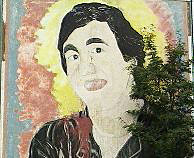
Other Republican images include:
Militaristic images in support of the IRA’s armed struggle have been common since the early 1980s.
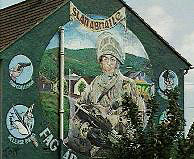
Irish history, including events such as the potato famine as well as traditional Irish imagery.
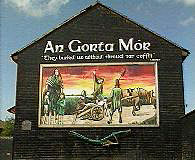
Other world struggles such as events in Palestine, Namibia, Russia and Cuba. This one represents the Aboriginal struggle for land rights in Australia.
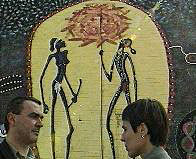
Take it further
Material Conflicts: Parades and Visual Displays in Northern Ireland
Neil Jarman, Berg
Displaying Faith
Neil Jarman, Institute of Irish Studies
Drawing Support: Murals in the North of Ireland
Bill Rolston, Beyond the Pale Publications - a series of three titles
Rate and Review
Rate this article
Review this article
Log into OpenLearn to leave reviews and join in the conversation.
Article reviews